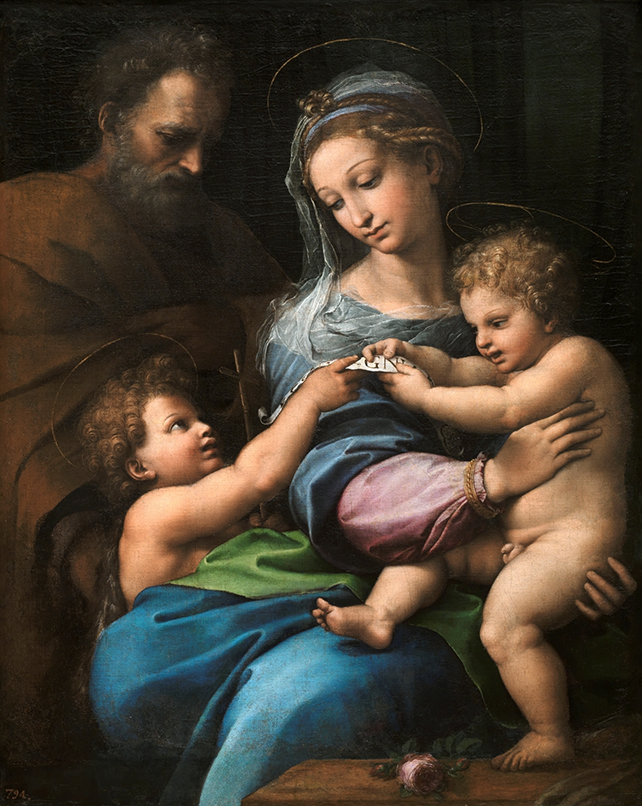
Unlocking the power of artificial intelligence (AI), we can now unveil intricacies within images that elude the human eye. Recently, an AI neural network made a fascinating discovery regarding a face in a Raphael painting—it turns out, that Raphael might not have been the artist behind it after all.
The focal point is the countenance of St. Joseph, situated in the upper left corner of the renowned artwork known as the Madonna della Rosa (or Madonna of the Rose).
For quite some time, experts have engaged in a debate over the authenticity of the painting as an original work by Raphael. Establishing the true origin of an artwork necessitates a diverse range of evidence. However, a novel analytical approach, employing an AI algorithm, aligns with the perspective that at least certain brushstrokes might be attributed to a different artist.
A team of researchers hailing from the United Kingdom and the United States crafted a specialized analysis algorithm, drawing inspiration from confirmed works created by the Italian master.

Using deep feature analysis, we used pictures of authenticated Raphael paintings to train the computer to recognize his style to a very detailed degree, from the brushstrokes, the color palette, the shading, and every aspect of the work,
says mathematician and computer scientist Hassan Ugail from the University of Bradford in the UK.
“The computer sees far more deeply than the human eye, to microscopic level. ”
In the realm of machine learning, training processes typically rely on an extensive array of examples, a resource not always abundant for an individual artist’s entire body of work. In this particular scenario, the team adapted a pre-trained architecture named ResNet50, developed by Microsoft, and integrated it with a conventional machine learning approach known as a Support Vector Machine.
This technique has demonstrated a remarkable 98 percent accuracy in discerning Raphael’s paintings. Typically, it undergoes training with entire images, but in this case, the team instructed it to focus on individual facial features as well.
While the Madonna, the Child, and St. John all bear the unmistakable mark of Raphael’s hand, the same cannot be said for St. Joseph. The researchers highlight that in prior discussions regarding the painting’s authenticity, St. Joseph’s facial depiction has been regarded as comparatively less skillfully executed than the others within the frame.

When we tested the della Rosa as a whole, the results were not conclusive,
says Ugail.
So, then we tested the individual parts and while the rest of the picture was confirmed as Raphael, Joseph’s face came up as most likely not Raphael.
There is a possibility that Giulio Romano, a pupil of Raphael, could have been the artist behind the fourth face, although this remains uncertain. It serves as yet another instance of contemporary technology unveiling the mysteries concealed within classical paintings—this time through the lens of AI.
The creation of the Madonna della Rosa is believed to have taken place on canvas between 1518 and 1520, according to experts. It wasn’t until the mid-1800s that art critics began harboring suspicions that Raphael might not be the sole artist behind every element of this masterpiece.
Now, those suspicions have been strongly validated, although the research team conducting the study emphasizes that this AI will play a supportive role for art experts in the future, rather than supplanting their expertise.
This is not a case of AI taking people’s jobs,
says Ugail. The process of authenticating a work of art involves looking at many aspects, from its provenance, pigments, condition of the work and so on.
However, this sort of software can be used as one tool to assist in the process.
The findings of the study have been officially published in Heritage Science.





